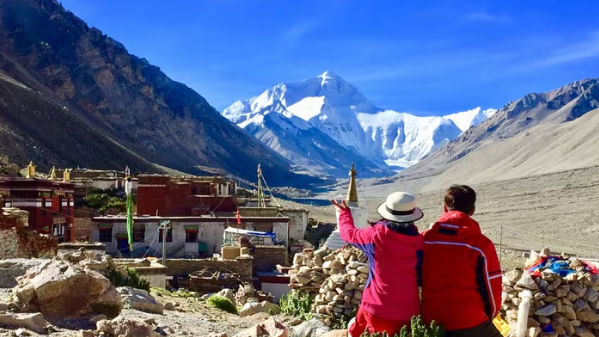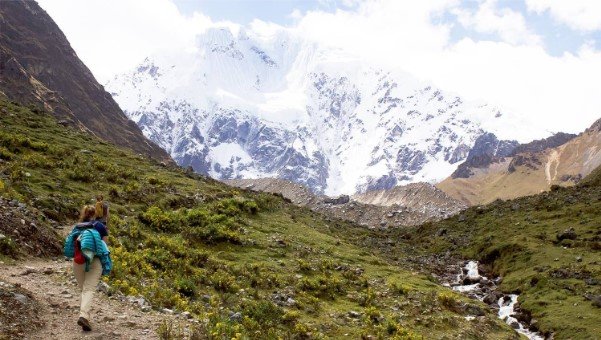The Tibet Everest Base Camp Tour is one of the most extraordinary overland adventures in the world. It combines breathtaking natural beauty, deep spiritual traditions, and the thrill of standing before the world’s highest peak — Mount Everest (8,848 meters) — from its northern face. Unlike the Nepal side, which requires a multi-day trek, the Tibet route allows travelers to reach Everest Base Camp (EBC) by vehicle, making it an accessible yet awe-inspiring experience for explorers of all ages.
Why Choose the Tibet Everest Base Camp Tour
Traveling to Everest Base Camp from Tibet offers a unique perspective. The northern approach to Mount Everest, located in Tingri County, Shigatse, provides panoramic views of the entire Himalayan range. Along the way, travelers pass through ancient monasteries, traditional Tibetan villages, and sacred landscapes that reflect centuries of Buddhist devotion.
The journey is not just about seeing Everest — it’s about experiencing Tibet’s spiritual heart. You’ll witness fluttering prayer flags, spinning prayer wheels, chanting monks, and the serene faces of pilgrims circumambulating monasteries. The combination of rugged mountains and peaceful spirituality creates an unforgettable contrast that defines Tibet’s essence.
The Route: From Lhasa to Everest Base Camp
Most Tibet Everest Base Camp tours begin in Lhasa, the capital of Tibet and a city that blends sacred heritage with modern life. Over several days, the route travels through Gyantse, Shigatse, and Rongbuk Monastery, before finally arriving at Everest Base Camp (5,200 meters).
Here’s a detailed overview of the journey:
Day 1–2: Arrival in Lhasa (3,650m)
Your journey begins in Lhasa, known as the “City of the Sun.” Spend the first two days acclimatizing to the altitude and exploring the city’s cultural treasures. Visit the Potala Palace, the former residence of the Dalai Lama, and the Jokhang Temple, Tibet’s most sacred shrine. Stroll through the Barkhor Street, where pilgrims circle the temple with prayer beads and incense.
Day 3: Lhasa to Gyantse (3,950m) via Yamdrok Lake
The drive to Gyantse is one of the most scenic parts of the trip. Along the way, you’ll cross the Kamba La Pass (4,794m), offering mesmerizing views of Yamdrok Tso, a turquoise holy lake surrounded by snow-capped peaks. Continue past Karo La Glacier, stopping for photos before reaching the historic town of Gyantse, home to the Gyantse Kumbum Stupa and Pelkor Monastery.
Day 4: Gyantse to Shigatse (3,900m)
A short drive brings you to Shigatse, Tibet’s second-largest city. Here, you can visit the magnificent Tashilhunpo Monastery, the traditional seat of the Panchen Lama. The monastery complex is one of Tibet’s most impressive, filled with golden statues, intricate murals, and the spiritual energy of chanting monks.
Day 5: Shigatse to Rongbuk Monastery (4,980m)
The road to Rongbuk passes through vast highlands and barren plains, offering glimpses of nomadic life and herds of yaks. As you approach the Himalayan Range, the landscape becomes increasingly dramatic. By afternoon, you’ll reach Rongbuk Monastery, the highest monastery in the world, with stunning views of Mount Everest dominating the skyline.
Day 6: Everest Base Camp (5,200m)
From Rongbuk, it’s a short ride or hike to Everest Base Camp, where you’ll stand before the mighty north face of Mount Everest. The sheer size and majesty of the mountain are overwhelming. On clear days, you can see Everest’s summit gleaming against the sky, a sight that leaves every traveler speechless. Spend time taking photos and soaking in the moment — a once-in-a-lifetime experience.
Day 7–8: Return Journey to Lhasa
After visiting EBC, you’ll retrace your route back to Shigatse and then to Lhasa, reflecting on your incredible journey through the Roof of the World
Highlights of the Tibet Everest Base Camp Tour
- Breathtaking Himalayan Views: See the towering peaks of Everest, Cho Oyu, Shishapangma, and Makalu along the way.
- Spiritual Monasteries: Explore Rongbuk, Tashilhunpo, and Jokhang — pillars of Tibetan Buddhism.
- Cultural Immersion: Experience Tibetan hospitality, prayer rituals, and daily monastic life.
- Scenic Lakes and Passes: Marvel at Yamdrok Lake, Karo La Glacier, and high mountain passes with panoramic vistas.
- Accessible Adventure: Unlike Nepal’s trekking route, Tibet’s EBC can be reached comfortably by vehicle.
Travel Permits and Requirements
Traveling to Tibet requires several special permits, all of which must be arranged through a registered Tibetan travel agency. Independent travel in Tibet is not permitted. Here’s what you’ll need:
- Chinese Visa – Apply for this from your home country or at the Chinese embassy in Kathmandu.
- Tibet Travel Permit – Issued by the Tibet Tourism Bureau; your agency handles this.
- Alien’s Travel Permit and Military Permit – Required for restricted areas like Everest Base Camp.
Your tour operator will take care of all necessary paperwork, ensuring a smooth and hassle-free experience.
Best Time to Visit Everest Base Camp in Tibet
The best seasons to visit Tibet Everest Base Camp Tour are April to June and September to early November.
- Spring (April–June): Offers clear skies, pleasant temperatures, and excellent visibility.
- Autumn (September–November): Known for stable weather and crystal-clear mountain views.
- Winter (December–February): The route remains open, but temperatures drop sharply.
- Monsoon (July–August): Roads may be muddy, but the landscapes are lush and vibrant.
Altitude and Acclimatization Tips
Altitude sickness is a common concern for travelers in Tibet, as the entire plateau sits above 3,500 meters.
Here are a few tips:
- Spend at least two days acclimatizing in Lhasa before heading higher.
- Drink plenty of water and avoid alcohol.
- Ascend gradually; listen to your body.
- Consult your doctor about preventive medication if needed.
Your guide will monitor your condition throughout the trip and adjust the pace accordingly.
Accommodation and Food
Accommodation during the Tibet Everest Base Camp Tour ranges from comfortable 3-star hotels in cities like Lhasa and Shigatse to basic guesthouses near Rongbuk and EBC. While facilities are simple at high altitudes, the experience of waking up with Everest in view is priceless.
Food options are typically a mix of Tibetan, Chinese, and Nepalese dishes. Try local specialties such as Tibetan butter tea, tsampa (roasted barley flour), and momos (dumplings). Most hotels also offer vegetarian and international options.
Cultural Etiquette and Responsible Travel
Tibet is a deeply spiritual land. Respect for local customs is essential:
- Always walk clockwise around religious monuments.
- Ask for permission before photographing monks or locals.
- Avoid touching prayer flags or sacred objects.
- Support local communities by purchasing handmade crafts and staying in Tibetan-owned lodges.
Responsible tourism helps preserve Tibet’s fragile environment and unique cultural identity.
Why the Tibet Everest Base Camp Tour Is Unforgettable
The Tibet Everest Base Camp Tour is not just an adventure — it’s a journey through a land of faith, mountains, and mystery. Every moment feels sacred, from the chanting monks in ancient monasteries to the first glimpse of Everest’s gleaming north face.
Unlike any other destination on Earth, Tibet offers travelers the chance to connect with something profound — the stillness of nature and the strength of the human spirit. Standing before Mount Everest, you’ll feel humbled, inspired, and forever changed.
Conclusion
The Tibet Everest Base Camp Tour perfectly blends cultural exploration and Himalayan adventure. Whether you’re drawn by the majestic scenery, the depth of Tibetan Buddhism, or the thrill of seeing the world’s highest mountain up close, this journey delivers it all.
From Lhasa’s sacred temples to the windswept plains of Rongbuk and the grandeur of Everest’s north face, every step unveils a story of resilience, spirituality, and wonder.
Tibet invites you not only to see its beauty but to feel its soul — a once-in-a-lifetime experience that stays in your heart forever.





